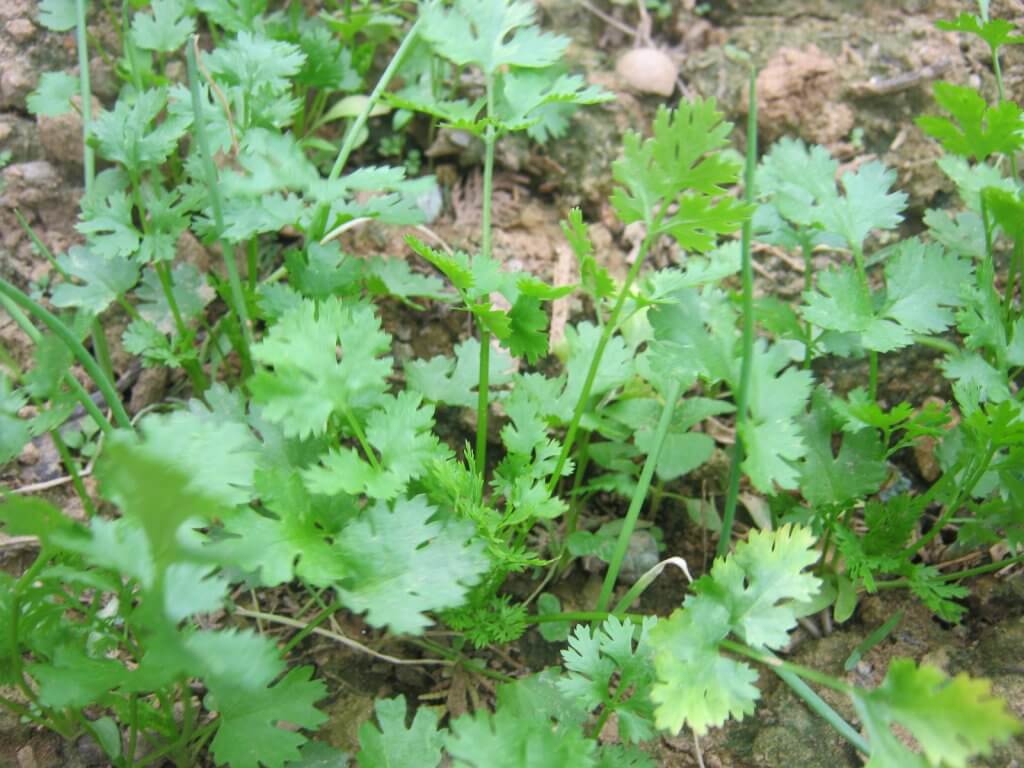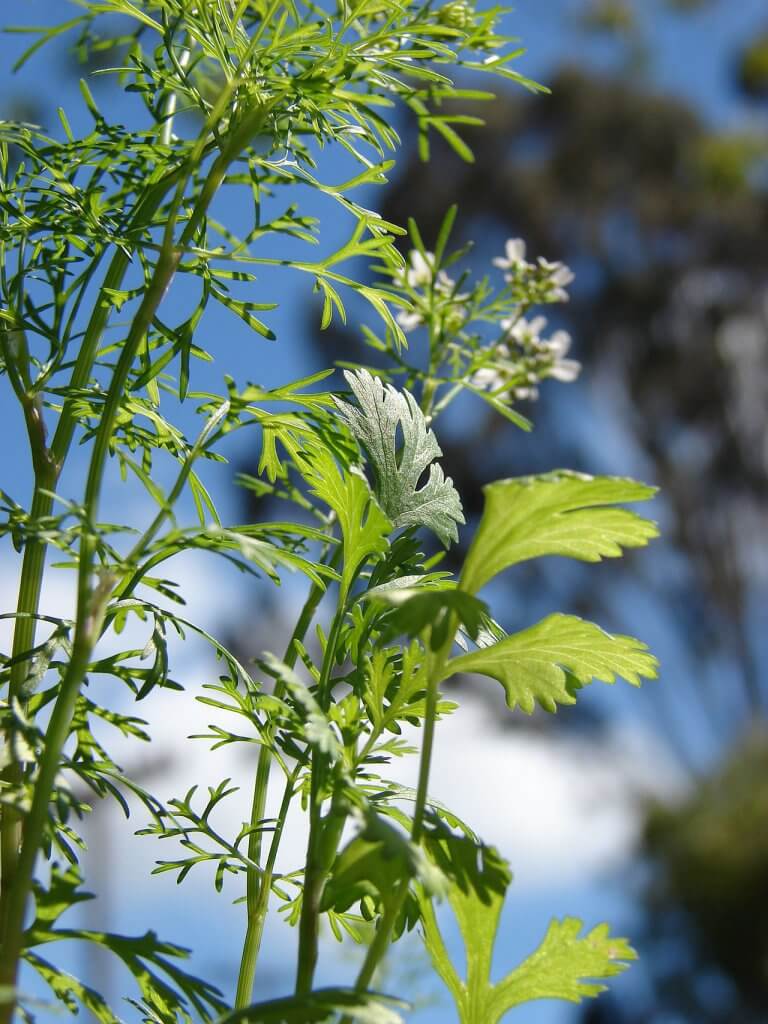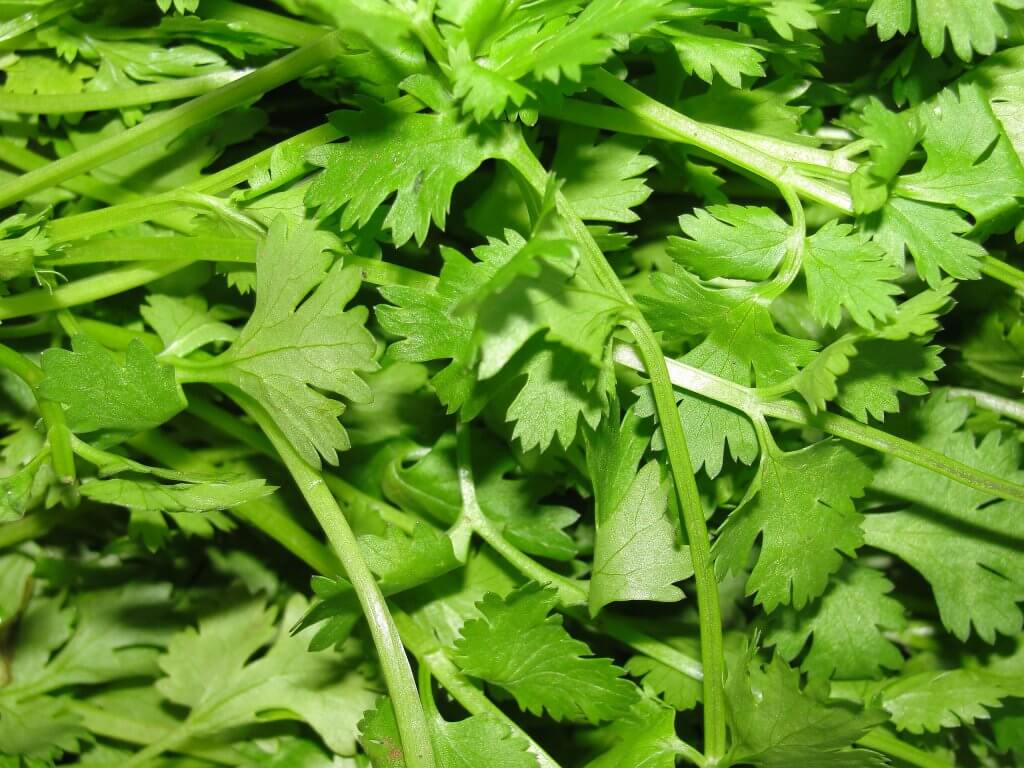Cilantro (Coriandrum sativum) is an annual herb with a bushy structure and distinctive flavor. It is referred to by different names worldwide, including coriander (in the UK), and Chinese parsley. It was originally native to parts of Southern Europe, North Africa and Western Asia. You will now find cilantro growing throughout the world, in herb gardens and in wild areas.
The delicate leaves of cilantro are softly serrated, with wider shapes towards the base and more feathered leaves at the tip. It will grow to a maximum height of roughly 50cm, with a bushy arrangement of stems and leaves. When flowering you will see small clusters of white and pale pink flowers at the tips of the stems. The entire plant is edible, from seeds to roots. You will notice hints of lemon amongst a particularly musky scent.

Cultivation and History of Cilantro

From the ancient Egyptians, to the Romans, cilantro is believed to have been cultivated for thousands of years. Today cilantro is used across a wide variety of cuisines, from Indian to Mexican. It is readily available in most supermarkets and markets.
Plant or place your cilantro in an area with full sun, or minimal shade. Soil must be moist, but very well drained. Seeds can be started indoors or placed directly in the garden. To ensure a continual harvest of cilantro, it is recommended to plant seeds every 3 weeks. Cilantro is very easy to propagate. Place cuttings into a small container of water and wait for roots to become established before planting.
Cilantro ‘bolting’ is a term that refers to when cilantro begins to quickly flower and produce seeds, instead of new leaves. The leaves will greatly lose their flavor when flowers appear, so many growers will attempt to prevent this. Cilantro will bolt in hot weather, to produce seeds before the plant wilts and dies. To combat this, you can buy special varieties that can withstand higher temperatures or harvest often to cut away potential buds. Or alternatively you can plant in early spring or late summer, when the weather is cooler.
Toxicity
Cilantro is not toxic when consumed in small amounts within dishes and recipes. However some people are known to be allergic to certain substances within the leaves. If you are pregnant, breast feeding or suffer from a bleeding disorder, a doctor must be consulted before consuming cilantro as a medical remedy. It has been noted that cilantro may slow blood clotting.
Uses
Culinary Uses of Cilantro
The fragrant leaves are used in many cuisines, including Indian curries, Mexican salsas, and Thai salads. Heat can reduce the flavor of cilantro leaves, so it is best to add them at the last minute when cooking.
The fruits from Coriandrum sativum are generally called coriander seeds. These can be roasted and ground into a aromatic spice.
They are particularly popular in flavoring Indian dishes, however other cultures have adapted recipes and dishes. For example the Zuni people of North America use ground coriander seeds in flavoring meat dishes.The roots of cilantro are used often in many Asian dishes. For example, you can add them to many Thai dishes including curries and soups.

Medicinal Uses of Cilantro
You can obtain a great amount of antioxidants from cilantro. This has made many people claim it has anti-cancer abilities. It has proven effective at reducing cancer cell invasiveness in some studies. Many people also take cilantro to aid in removing metals from the body, particularly from lead poisoning.
Cilantro also has a history of being used as an anti inflammatory and antibacterial herbal remedy. It was used topically to treat infections and arthritis in traditional Chinese and Ayurvedic medicine.
Did you know…
You may be one of few people to possess a gene that makes cilantro smell and taste like soap. Certain genes will determine how you perceive and taste some of the substances found with cilantro.
Conclusion
You can use cilantro in such a variety of ways it as an absolute must in any herb garden or kitchen windowsill. Use the leaves as a decorative garnish on Thai soups or Indian side dishes like dhal, saag aloo and naan breads. Or try your hand at making your own salsa with a bunch of roughly chopped, fresh cilantro from the garden. It’s bushy structure and delicate flowers make cilantro a very attractive plant to have within your garden. As an added benefit cilantro can attract pollinators, butterflies and hover flies which can help in reducing herb garden pests.
—————Written by Hannah Sweet
Hannah is a freelance writer and graphic designer from the UK. With a penchant for travelling, photography and all things botanical, she enjoys writing about a wealth of topics and issues, from conservation and slow living, to design and travel. Learn more about her writing and design services at www.sweetmeanders.co
Many of our readers find that subscribing to Eat The Planet is the best way to make sure they don't miss any of our valuable information about wild edibles.
See our privacy policy for more information about ads on this site






